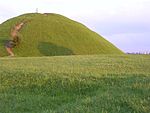Oskar Schindler's Enamel Factory
1937 establishments in PolandJews and Judaism in KrakówManufacturing plants in PolandMuseums in KrakówOskar Schindler

Oskar Schindler's Enamel Factory (Polish: Fabryka Emalia Oskara Schindlera) is a former metal item factory in Kraków. It now hosts two museums: the Museum of Contemporary Art in Kraków, on the former workshops, and a branch of the Historical Museum of the City of Kraków, situated at ul. Lipowa 4 (4 Lipowa Street) in the district of Zabłocie, in the administrative building of the former enamel factory known as Oskar Schindler's Deutsche Emailwarenfabrik (DEF), as seen in the film Schindler's List. Operating here before DEF was the first Malopolska factory of enamelware and metal products limited liability company, instituted in March 1937.
Excerpt from the Wikipedia article Oskar Schindler's Enamel Factory (License: CC BY-SA 3.0, Authors, Images).Oskar Schindler's Enamel Factory
Lipowa, Krakow Podgórze
Geographical coordinates (GPS) Address Nearby Places Show on map
Geographical coordinates (GPS)
| Latitude | Longitude |
|---|---|
| N 50.0474 ° | E 19.96175 ° |
Address
Fabryka Schindlera
Lipowa
30-702 Krakow, Podgórze
Lesser Poland Voivodeship, Poland
Open on Google Maps










